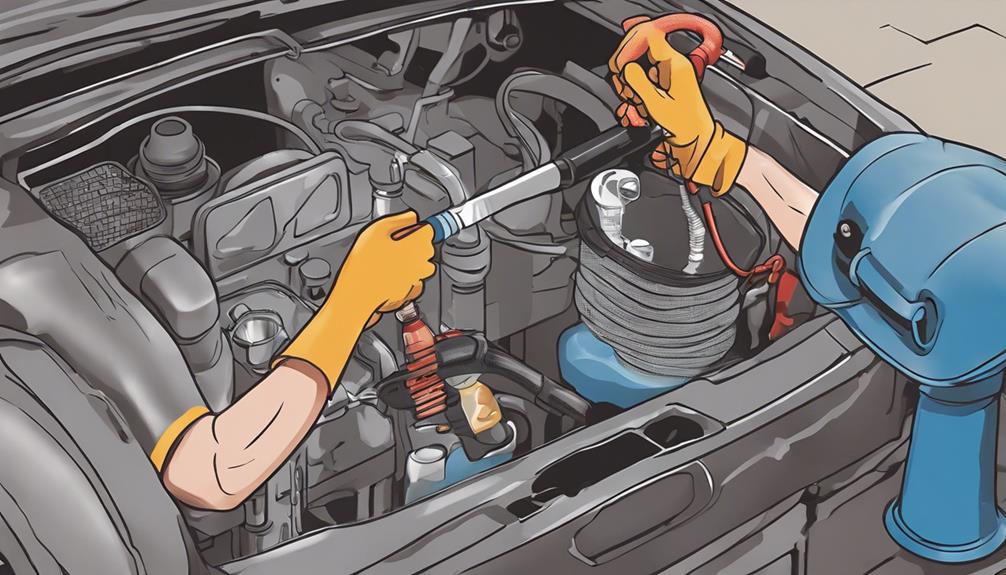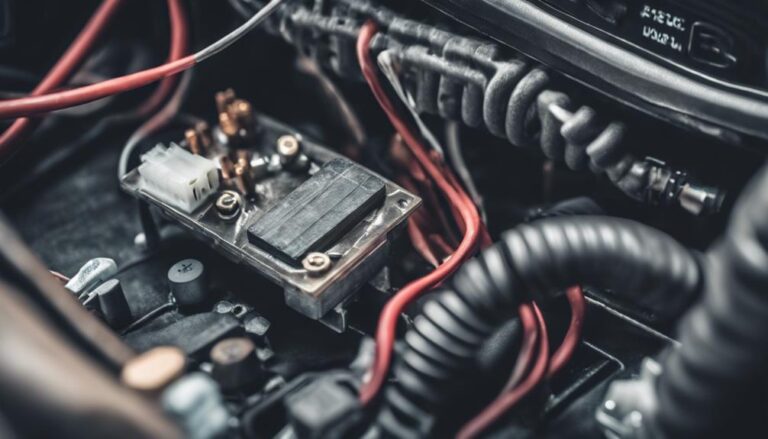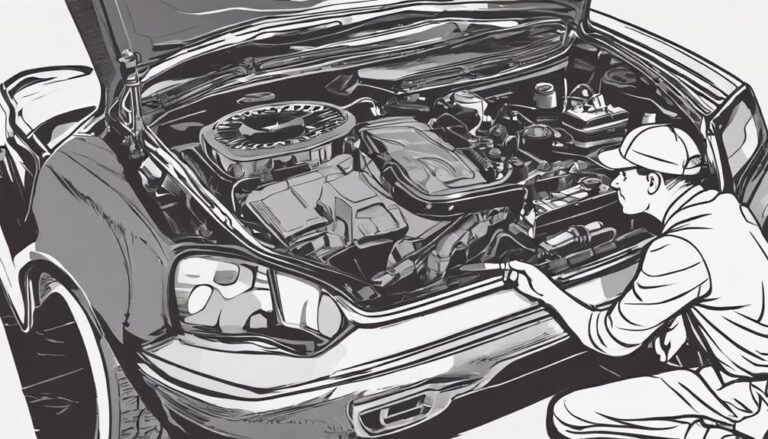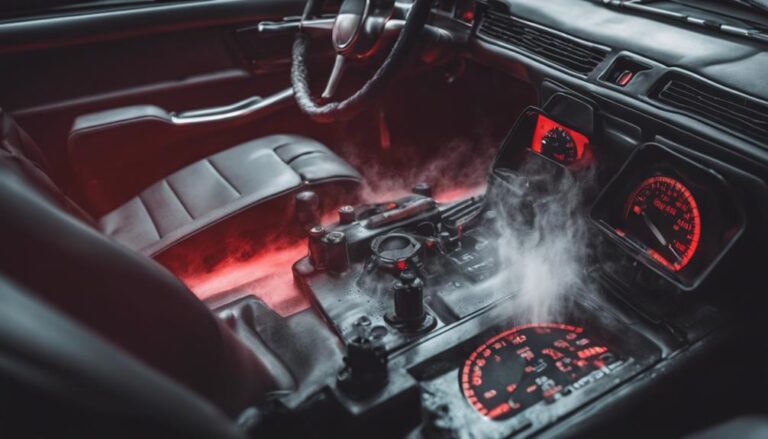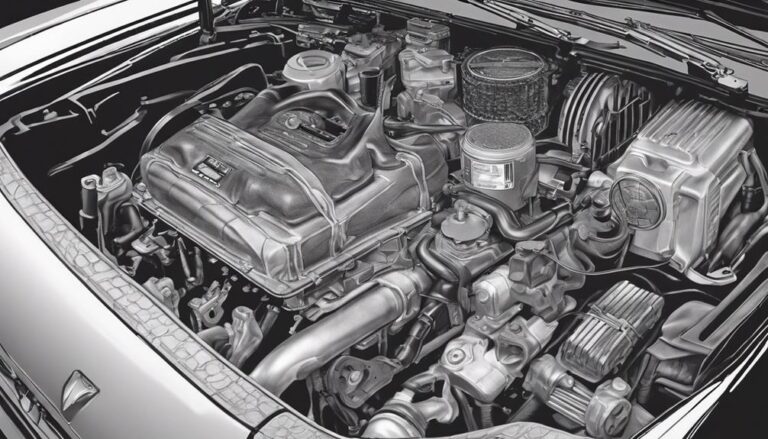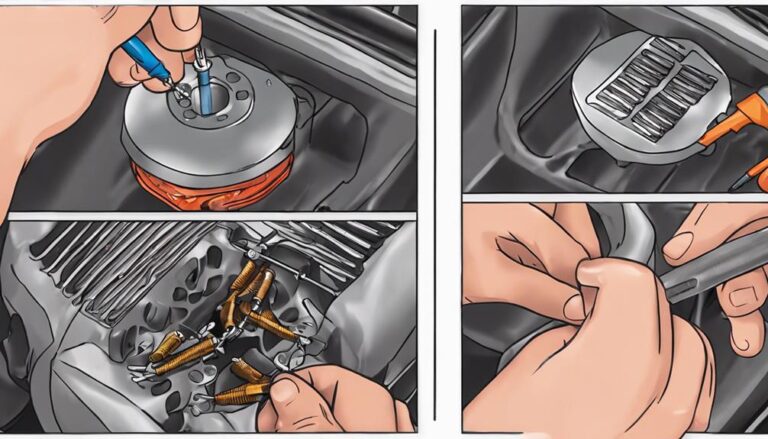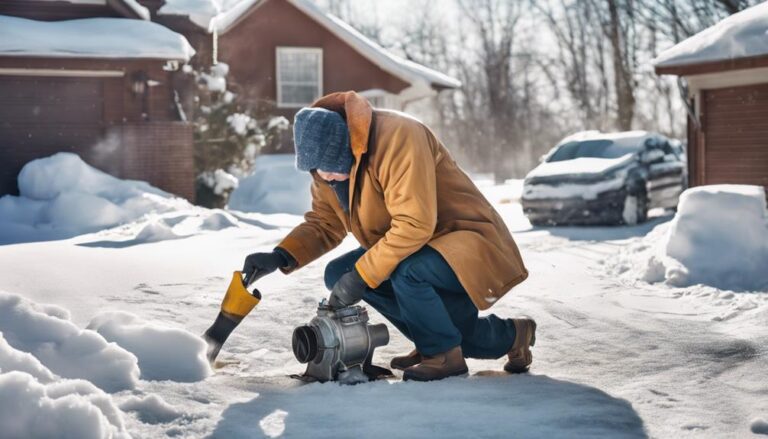DIY Heater Core Flush: 5 Easy Steps
Is your vehicle's heater struggling to keep you warm, making you feel like you're driving in the Arctic? Fear not, for a DIY heater core flush might just be the solution you've been looking for.
By following five simple steps, you can potentially restore your heater's efficiency and warmth.
So, grab your tools and get ready to tackle this project head-on.
Key Takeaways
- Safety first: Gather tools, drain coolant safely, and wear protective gear.
- Thoroughly flush heater core: Disconnect hoses, flush with hose, troubleshoot if needed.
- Refill system correctly: Mix coolant, pour into reservoir slowly, bleed air, check for leaks.
- Test heater functionality: Engage heating, check air warmth, inspect hoses for leaks or blockages.
Gather Required Tools

To successfully gather all the tools necessary for the heater core flush, refer to the following list of essential items. When starting on this task, it's important to have the right tools to guarantee a smooth and efficient process. The following tools are required for a successful heater core flush:
- A pair of safety goggles to protect your eyes from any splashes or spills
- A pair of heavy-duty gloves to shield your hands from the chemicals used during the flush
- A bucket or container to collect the old coolant
- A hose for flushing the heater core
- A suitable coolant flush solution recommended by your vehicle's manufacturer
- A funnel for pouring the flush solution into the system
- A socket set or wrench to remove any necessary components
Safety precautions must be adhered to at all times during the heater core flush process. Make sure the engine is completely cool before starting, as you'll be working with the coolant system. Always follow the manufacturer's guidelines and recommendations to prevent any accidents or damage to your vehicle. By having the right tools and following safety protocols, you can successfully complete the heater core flush with ease and efficiency.
Drain the Coolant System
When draining the coolant system for a heater core flush, make sure the engine has cooled down completely to prevent any accidents or injuries. This step is vital in the process to guarantee a safe and effective coolant system maintenance. Follow these steps carefully to drain the coolant system properly:
- Locate the Drain Valve: Find the drain valve on the radiator. It's usually at the bottom of the radiator and can be identified by a small knob or plug.
- Prepare Coolant Disposal Container: Place a suitable container underneath the drain valve to collect the coolant for proper disposal later.
- Open the Drain Valve: Using a wrench or pliers, carefully open the drain valve to allow the coolant to flow out.
- Monitor Coolant Flow: Keep an eye on the coolant flow to ensure it's draining properly into the container.
- Close the Drain Valve: Once all the coolant has been drained, securely close the drain valve to prevent leaks and potential risks associated with coolant spills.
Properly disposing of the coolant is essential to protect the environment, and following these steps will help you complete this task safely and efficiently.
Flush the Heater Core
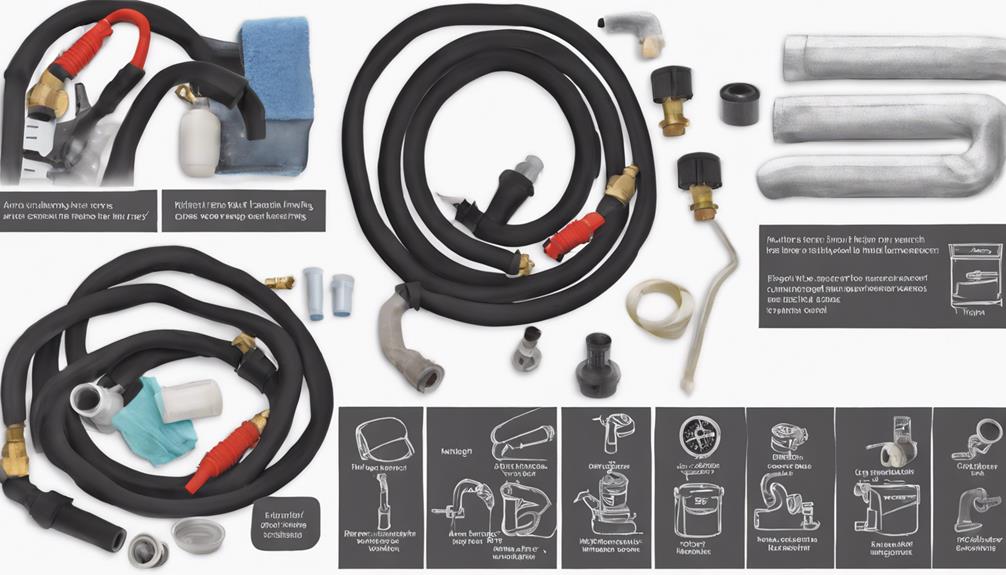
After draining the coolant system, the next step in performing a heater core flush is to effectively clean out the heater core to maintain peak functionality. Heater core maintenance is critical for top heating performance in your vehicle.
To begin, locate the heater core; it's often situated behind the dashboard on the passenger side. Disconnect the heater hoses leading to the core, making sure to mark their placements for reconnection. Attach a garden hose to one of the heater core tubes and gently flush water through it. Keep flushing until the water runs clear, indicating that debris and buildup have been removed.
If the flow remains restricted, try reversing the flow direction or using compressed air to dislodge stubborn blockages. These troubleshooting tips will help make sure that your heater core is free from obstructions, allowing for efficient heat transfer and overall improved performance.
Refill the Coolant System
Begin the coolant system refill process by ensuring the heater core flush has been successfully completed and the heater hoses are reconnected securely. Proper coolant system maintenance is essential for the longevity of your vehicle and to ensure it operates at best performance. Refilling the coolant system after a heater core flush is a vital step in maintaining proper coolant levels. Follow these steps to refill the coolant system effectively:
- Prepare the Coolant Mixture: Mix the appropriate coolant with distilled water following the manufacturer's recommendations.
- Locate the Coolant Reservoir: Identify the coolant reservoir in your vehicle's engine bay.
- Add Coolant: Slowly pour the coolant mixture into the reservoir until it reaches the recommended level.
- Bleed Air: To remove air bubbles from the system, start the engine and let it run while monitoring the coolant level.
- Check for Leaks: After the refill, inspect the system for any leaks to ensure everything is properly sealed.
Test Heater Operation

To assess the functionality of the heater, engage the heating system and observe the temperature output within the vehicle cabin. Start by turning on the engine and setting the heater to its maximum temperature. Allow the vehicle to run for a few minutes to reach operating temperature. Next, feel the air coming out of the vents. If the air isn't warm, there may be a problem with the heater core.
Check the thermostat to make sure it's functioning correctly. A faulty thermostat can prevent the heater from producing warm air. Additionally, inspect the hoses connected to the heater core for any signs of leaks or blockages. If the hoses are damaged or clogged, it can affect the proper flow of coolant through the system, leading to inadequate heating.
Frequently Asked Questions
Can I Use a Different Type of Coolant for the Refill, or Does It Have to Be the Same as What Was Drained?
You can explore coolant alternatives, but validate compatibility with your vehicle's specifications. Stick to the same type for refilling unless recommended otherwise by a professional. Flushing frequency depends on usage and maintenance history.
How Often Should I Flush My Heater Core to Prevent Issues?
To maintain your heater core effectively and avoid issues, it's recommended to flush it every 1-2 years. This heater core maintenance practice helps establish proper functioning and prevents clogs, leaks, or reduced heating performance. DIY heater core troubleshooting benefits from this proactive approach.
Is There a Specific Method for Disposing of the Old Coolant Safely?
When disposing of old coolant, confirm proper disposal methods are followed. Safety precautions include wearing protective gear, such as gloves and goggles, and never pouring coolant down drains. Take used coolant to a designated recycling center for proper disposal.
What Are Some Signs That My Heater Core May Need to Be Replaced Instead of Just Flushed?
If you notice a sweet smell, foggy windows, or a lack of heat in your car, it may be time to replace your heater core. Regular flushing and preventive maintenance can help prolong its lifespan.
Are There Any Special Precautions I Need to Take When Working With the Coolant System, Such as Wearing Protective Gear or Working in a Well-Ventilated Area?
When working with coolant, always prioritize safety by wearing protective gear and working in a well-ventilated area to prevent inhaling harmful fumes. Dispose of coolant properly. Signs for heater core replacement include leaks, foggy windows, or a sweet smell.
Conclusion
In summary, performing a DIY heater core flush is a simple and effective way to maintain your vehicle's heating system.
Did you know that regular maintenance of your heater core can help prevent costly repairs down the line?
By following these 5 easy steps, you can make sure that your heater core is functioning properly and efficiently.
Remember, a well-maintained heater core is essential for staying warm during the colder months.

